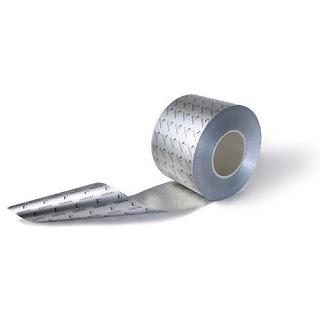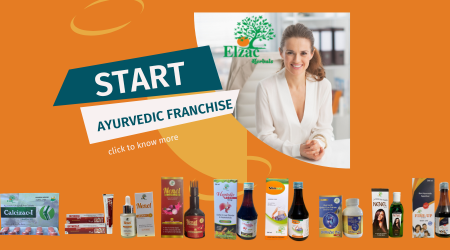Language in Video is Hindi
Chapter 3: Know About Pharmaceutical Industry and Pharma Terminology
We have learned very detailed information about pharmaceutical industry in our basics like what are the drugs, types of drugs, how to sell, market size, growth opportunities. In this chapter we will know about common pharmaceutical terminology use in Pharma Franchise Marketing.Sales Types:
We have covered in our Basic Knowledge of Pharmaceutical Industry sectionNet Rates:
Net rates are the rates at which a pharmaceutical company sells a product to pharma franchisee. These rates may be exclusive or inclusive of GST and Freight.Price to Retailers (PTR):
Price to retailer is the price at which pharma franchisee distributor sell products to the pharmacy or chemist shop. These prices may also be exclusive or inclusive of GST.Price to Stockist (PTS):
Price to Stockist is the price at which pharma franchisee distributor sell products to the distributor or stockist. If pharma franchisee work own-self as distributor or stockist then he/she don’t need to appoint stockist/distributor.Check out: How to calculate Price to Retailers (PTR) and Price to Stockist (PTS)? PTR/PTS calculator you will also find here
Scheme/Offer:
Scheme or Offer is referred as free good or any other intensives provided by Pharmaceutical Franchise Company to its franchisee distributor or franchisee distributors to chemists/pharmacies.Packaging Terms:
Alu-Alu:
Alu-alu packing meaning aluminium foil at upper and lower side of pack as shown in image below.
Blister Packing:
Lower side is of aluminium foil and upper side side is of PVC material as shown in image below. PVC may be of transparent or amber color or any other as per requirement.
Bottles:
Bottles use in pharma is generally made-up of glass or Pet. PET, which stands for polyethylene terephthalate. Pet Bottle are made up of polyethylene terephthalate is a form of polyester (just like the clothing fabric). These are used as a replacement of glass bottle which are fragile in nature. Bottles are used in many sizes like 15 ml, 30 ml, 50 ml, 100 ml, 200 ml, 500 ml, 450 ml, 1 litre etc.
Foil:
Foil is a thin sheet of metal made up of aluminium or any other material and used to pack different types of pharmaceutical dosage forms like tablet, capsules, powder etc. Foil is commonly used in alu alu packing, blister packing, sachet etc. It may be printed or without print
Lami Tube:
Lamitube (or laminate tubes) are essentially tubes that are made by sealing two sides of a flat laminate. This laminate may be ABL (Aluminium Barrier) or PBL (Plastic Barrier)
Vials:
A vial is a small glass or plastic vessel or bottle, often used to store medication as liquids, powders or capsules
Ampoules are a small sealed vial which is used to contain and preserve medicines, usually a solid or liquid. Ampoules are made of glass.
Syringe:
A medical device that is used to inject fluid into, or withdraw fluid from, the body.
Box is an outer cover made up of paper, plastic or any other material use to cover primary packing material such as strip, bottle, vial, ampoules, lami etc. Below is the sample of box.
Sachet:
A sachet is a small scented pouch filled with medicine generally in powder form or granules form.
These are the terms related to box designing outlooks like shining, lamination, emboss etc. Embossing is the processes of creating either raised images and designs in paper and other materials.
Inner/Outer Packing:
Some products are packed in two boxes. One is for primary packing called inner packing and outer Packaging is the outermost enclosure that protects the inner packaging.10*10, 6*1*15 Packing meaning in Blister and Alu-Alu:
10*10 Packing means a box has 10 strip and each strip has 10 units i.e. tablets, capsules etc. 6*1*15 packing means a box has 6 strips and each strip is packed into an inner packing (mono cartoon box) and each strip has 15 units i.e. tablets, capsules etc.
More example like this is 3*1*10 and 10*4 etc. First numeric indicates number of strips and last one indicates number of units per strip. If three numeric indication then middle one indicates further packing under main outer box.
More example like this is 3*1*10 and 10*4 etc. First numeric indicates number of strips and last one indicates number of units per strip. If three numeric indication then middle one indicates further packing under main outer box.
Types of medicines based upon dosage form
Tablets: Tablets are the solid dosage form prepared through molding or compression method. Medicine’s active ingredient is compressed to form a solid form with the help of excipients which is known as Tablets. Tablets may be in circular for, oval form or flat form or any other form.Capsules: Capsules are like the containers made up of gelatin or any other material and medicaments are filled into these small containers. In technical language, Capsules are a solid dosage form in which the drug substance is enclosed in a water-soluble shell or an envelope. Capsules are generally available in two form. Hard Gelatin Capsules and Soft Gelatin Capsules.
In Hard Gelatin Capsules, first empty shell is first prepared and then medicaments is filled where as in soft gelatin capsules, formation and filling of capsule happen simultaneously.
Syrups: Syrup is the liquid dosage form where all ingredients are in soluble form and makes a concentrated or nearly saturated solution.
Suspensions: Suspension is also a form of liquid dosage form but all ingredients are not soluble but get suspended throughout the bulk of the solvent, left floating around freely in the medium.
Injections: Injection is way of injecting liquid medicaments directly into person’s body by using a needle and syringe.
Ointment/Cream: Creams and Ointments are semi solid preparations for external use. A cream is a preparation of a medication for topical use that contains a water base. It is a preparation of oil in water. An ointment is a preparation of a medication for topical use that contains an oil base. It is a preparation of water in oil.
Gel form: Gel is also a semi solid dosage form having interaction (either physical or covalent) between colloidal particles within a liquid vehicle
Spray: Spray is generally used topically used formation having dynamic collection of drops dispersed in a gas. A spray nozzle is the device used to generate a spray.
Eye/Ear Drops: Eye/Ear drops are the sterile preparations meant to be used for treatment of eye or ear related diseases and complications.
Type of medicines based upon their indications
General: General Medicine is the branch of medicine that deals with the diagnosis and nonsurgical treatment of diseases of the internal organs. These medicines are used for general diseases and complications. A general practitioner (GP) is a medical doctor who treats acute and chronic illnesses and provides preventive care and health education to patients.Paediatric: Pediatrics is the branch of medicine that involves the medical care of infants, children, and adolescents and a paediatrician is a medical practitioner specializing in children and their diseases. Medicines that are in diagnosis and treatment of diseases related to children is known as Paediatric medicines.
Anti-diabetic: Antidiabetic drugs are medicines used to stabilise and control blood glucose levels amongst people with diabetes.
Anti-hypertensive: Antihypertensives drugs are the medicines used to stabilise and control hypertension.
Anti-Pyretic: Anti-pyretic drugs are the medicines that are used to reduce the fever.
Anti-Inflammatory: Anti-inflammatory drugs are the medicines that reduces inflammation or swelling. Two types of anti-inflammatory drugs are generally used: Nonsteroidal anti-inflammatory drugs (NSAIDs) and Steroidal anti-inflammatory drugs.
Analgesics: Analgesics are medicines that are used to relieve pain. They are also known as painkillers or pain relievers.
Antacids: An antacid is a substance which neutralizes stomach acidity and is used to relieve heartburn, indigestion or an upset stomach.
Psychiatric: Psychiatry is the medical specialty devoted to the diagnosis, prevention, and treatment of mental disorders. Medicines and drugs use for this purpose is known as Psychiatric drugs.
Critical care: Intensive care medicine, also called critical care medicine, is a medical specialty that deals with critically ill patients who have, are at risk of, or are recovering from conditions that may be life-threatening. It includes providing life support, invasive monitoring techniques, resuscitation, and end-of-life care.
Dermatology medicines: Medicines used for conditions related to skins.
Speciality Division: A pharmaceutical company may have number of divisions based upon product line and by concentrating at particular type of disease etc. Divisions that have products related to a particular disease or treatment type is known as Speciality divisions. For example, Division that only have diabetic related products is known as diabetic division.
Miscellaneous Medicines: There are many more types of drugs based upon their indications for example sexual disorders, piles,
Somewhat information about Medicine’s uses and side roles:
We have discussed about medicine’s uses and category above. But some medicines or ingredients has special indications or role. For example, clavulanate has no clinical use but it enhances activity of amoxycillin by inhibiting β-lactamase inhibitor.
Next: Part 2: Sales Process
Previous: Chapter 2: Know About Pharmaceutical Company and What a Franchisee Distributor Wants?












thnks
ReplyDelete